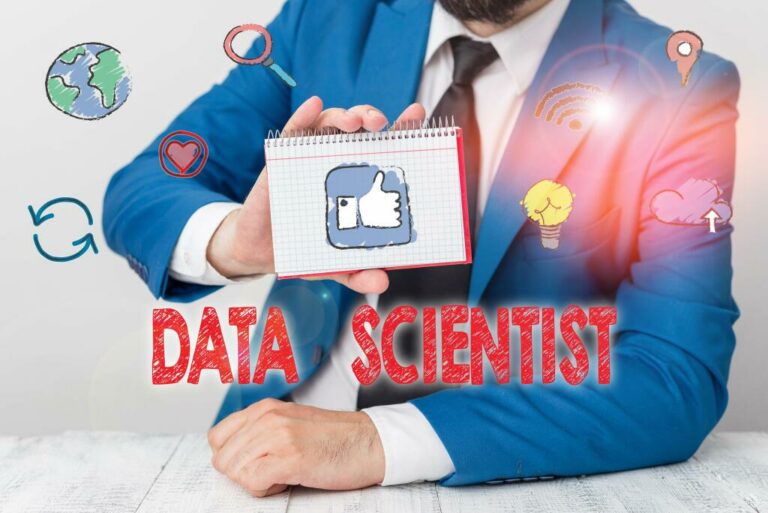Content
Edge computing typically happens directly where sensors are attached on devices, gathering data—there is a physical connection between data source and processing location. The goal of edge computing is to bring the data sources and devices closer together, eliminating the time and distance to process. In theory, this in turn improves performance and speed of applications and devices. Data generation, processing, and storage are all done near to one another in edge computing, which is truly a subtype of fog computing.
Fog computing is defined as a decentralized infrastructure that places storage and processing components at the edge of the cloud, where data sources such as application users and sensors exist. This article explains fog computing, its components, and best practices for 2022 in detail. The cloud provides the extended computing resources needed for storing the vast amount of data that edge devices produce but do not use. It also provides more computing resources for further analysis, which makes the cloud a complementary ecosystem for fog computing applications. If you find yourself at this crossroad, this may be a good time to consider deploying fog computing in your network. Generally speaking, fog computing is best suited for organizations that need to analyze and react to real-time data in a twinkling of an eye.
Mobile edge computing, Fog et al.: a survey and analysis of security threats and challenges
Fog computing is especially important to devices connected to the internet of things . Fog computing is becoming more popular with industries and organizations around the world. However, the main industries that take advantage of this technology are the ones that require data analytics close to the network edge and use edge computing resources. One major industry that relies heavily on fog computing is healthcare. IoT in MedTech has grown substantially with smartwatches and other wearable devices.

Using fog computing means no complaints about the loss of connection. It uses multiple interconnected channels to ensure the best connectivity for any activity. You have to regularly analyze and respond to time-sensitive generated data in the order of seconds or milliseconds. The structure’s objective is to place fundamental analytic services closer to the point of demand, at the network’s edge. Users no longer have to transfer data as far across the network, which enhances performance and increases overall network efficiency.
#4. Traffic Light System
The result is more physical distance between the processing and the sensors, yet no additional latency. The cloud allows users to access solutions for computing, connectivity, and storage cost-effectively and easily, but it is a centralized resource. This can mean performance issues and delays for data and devices that are located far from the centralized cloud.
Instead, a network of connected servers is used to store and answer different queries. The availability of services from any place, anytime, makes it a highly popular service in the fast-paced technology world. Fog computing brings the data storage and processing power https://globalcloudteam.com/ closer to the user. The OPC server converts the raw data into a protocol that can be more easily understood by web-based services such as HTTP or MQTT . The MQTT protocol is particularly designed for connections with remote locations where network bandwidth is limited.
With over 30 billion IoT devices already connected, and 75 billion due to go online by 2025, the future of IoT systems certainly signals more connected things. The Fourth Industrial Revolution—a convergence of technologies such as 5G networks, artificial intelligence, quantum computing, cloud, and fog computing promises to bring new benefits with IoT-based systems. There are a variety of use cases that have been identified as potential ideal scenarios for fog computing. Examples include wearable IoT devices for remote healthcare, smart buildings and cities, connected cars, traffic management, retail, real-time analytics, and a host of others.

Trustworthiness has been regarded as a dominating issue in all the have-to-be-addressed issues in SIoV, and many reputation-based countermeasures have been adopted to solve the trustiness-related issues in IoV. An online approach is adopted to handle the requests in a slot-by-slot way. The simulation results show its effectiveness and advantages when compared to other existing approaches. In a fog environment, the processing takes place in a data hub on a smart device, or in a smart router or gateway, thus reducing the amount of data sent to the cloud. It is important to note that fog networking complements — not replaces — cloud computing; fogging allows for short-term analytics at the edge, and the cloud performs resource-intensive, longer-term analytics.
Cloud Data Protection Explained
Fog computing incorporates edge processing as well as the required network connections and infrastructure for transferring the data. It is simpler to take advantage of the processing capacity already available in such devices by transferring real-time analytics into a cloud computing fog that is situated closer to the devices. End devices have quicker generation and analysis of data thanks to the fog nodes’ connectivity with smart and efficient end devices, resulting in lower data latency. Dealing with data privacy, data encryption and decryption, and data integrity, this layer makes sure that privacy is secure and preserved for data that is outsourced to the fog nodes.
- Another way to think about the difference between edge computing and fog computing is that fog is the standard that enables repeatable, structured, scalable performance within the edge computing framework.
- The regular updates from the AGV can then be used for diverse purposes including tracking the location of inventories or materials being transported across specified zones.
- Another use case for fog computing is smart transportation networks.
- An IoT sensor on a factory floor, for example, can likely use a wired connection.
- The good thing for the users is fog and cloud computing can complement each other.
IEEE adopted the fog computing standards proposed by OpenFog Consortium. It is important to note that these components must be governed by an abstraction layer that exposes a common interface and a common set of protocols for communication. It generates a huge amount of data and it is inefficient to store all data into the cloud for analysis. Since the distance to be traveled by the data is reduced, it results in saving network bandwidth. Fog pushes intelligence down to LAN of the cloud architecture, whereas in Mist, it is not mandatory.
It improves the overall security of the system as the data resides close to the host. It is used whenever a large number of services need to be provided over a large area at different geographical locations. This makes processing faster as it is done almost at the place where data is created. By completing and submitting this form, you understand and agree to YourTechDiet processing your acquired contact information.
Locations
Cloud consists of devices that can offer large storage and high-performance servers. The cloud stores data and performs computation analysis permanently for both permanent access and backup for users. Another advantage of processing locally rather than remotely is that the processed data is more needed by the same devices that created the data, and the latency between input and response is minimized. Because the initial data processing occurs near the data, latency is reduced, and overall responsiveness is improved. The goal is to provide millisecond-level responsiveness, enabling data to be processed in near-real time.
Application lifecycle is a challenge that the cloud is already facing, as the presence of droplets in more devices requires the right abstractions in place, to make sure programmers don’t deal with these issues. Data is converted into a protocol such as HTTP so that it can be understood easily by internet-based services. Data management becomes laborious because, in addition fog computing vs cloud computing to storing and computing data, data transfer requires encryption and decryption, which releases data. Because the distance that data has to travel is decreased, network bandwidth is saved. Quantum computing has lots of potential for high compute applications. In 2015, Cisco partnered with Microsoft, Dell, Intel, Arm and Princeton University to form the OpenFog Consortium.
Apply access control at the fog node layer
Whether it is sending large files to your friends or working on the same file with your colleagues, flexibility, and convenience are impossible to imagine without cloud computing. Connected manufacturing devices with cameras and sensors provide another great example of fog computing implementation, as do systems that make use of real-time analytics. Whether in transmission or being stored, it is essential to protect IoT data. Users can monitor and protect fog nodes using the same controls, policies, and procedures deployed across the entire IT environment and attack continuum to provide enhanced cybersecurity. This demonstrates that massive amounts of data analysis performed in real-time are vital to prevent accidents, and a fog computing strategy is crucial to maximizing the use of the available mobile bandwidth.
Geekflare Tools
After going through the article thoroughly, you can easily tell the difference between fog and cloud computing. The good thing for the users is fog and cloud computing can complement each other. By blending these two solutions, you can create new communication and experiences. Cloud computing offers you the efficiency needed for modern-day applications.
These critical infrastructures and devices are faced with cyber-attacks. Therefore, the SG systems required lots of research to protect these attacks from economic damage, security deficits, national grid security, and life loss. This paper comprehensively reviews SG cyber-physical and cyber security systems, standard protocols, and challenges. We discussed the SG model, key elements, advanced distribution management system , supervisory control and data acquisition , and advanced metering infrastructure framework . Then, we discussed the SG cyber-physical system communication standards and protocols.
Fog Computing vs Edge Computing
Two such cloud architecture is Fog Computing and Mist Computing architectures. With this intermediate step of decentralisation, more immediate actions are achieved, which also require less bandwidth consumption . As an example and success story, we highlight the successful combination of both technologies in our project CONNECTS. CONNECTS projectIn this project, we have developed a network of Intelligent Transformation Centres with Edge Computing. However, the initial investment for its implementation will be higher. Companies performing collection and further processing that want to automate and improve their processes as much as possible.
Although edge devices and sensors are where data is generated and collected, they sometimes don’t have the compute and storage resources to perform advanced analytics and machine learning tasks. Though cloud servers have the power to do this, they are often too far away to process the data and respond in a timely manner. While edge devices and sensors are where data is generated and collected, they don’t have the compute and storage resources to perform advanced analytics and machine-learning tasks. Though cloud servers have the power to do these, they are often too far away to process the data and respond in a timely manner. Decentralization and flexibility are the main difference between fog computing and cloud computing. Fog computing, also called fog networking or fogging, describes a decentralized computing structure located between the cloud and devices that produce data.
Cloud computing
Circumstances can be tough since IoT devices are frequently used in emergency situations and challenging environmental conditions. Under these circumstances, fog computing can increase dependability while easing the load on data transmission. Lower operational expenses result from processing as much data locally as feasible and preserving network capacity. Smart cities must adapt to changing demand, lowering output as necessary to maintain cost-effectiveness, in order to operate effectively. Thus, real-time information on electricity output and consumption is required by smart grids. Data is transformed before being delivered to an IoT gateway or fog node.
The ideal place to analyze most IoT data is near the devices that produce and act on that data. Fog computing is a medium weight and intermediate level of computing power. Rather than a substitute, fog computing often serves as a complement to cloud computing. Fog networking complements — doesn’t replace — cloud computing; fogging enables short-term analytics at the edge, while the cloud performs resource-intensive, longer-term analytics.
It’s utilized when only a small amount of data has to be sent to the cloud. This data is chosen for long-term storage and is accessed by the host less frequently. Fog computing reduces the volume of data that is sent to the cloud, thereby reducing bandwidth consumption and related costs. The OpenFog Consortium is an association of major tech companies aimed at standardizing and promoting fog computing. Ramya is an IT specialist who has worked in the startup industry for more than a decade. She has coded, architected, and is now writing about, technology that shapes the world.



